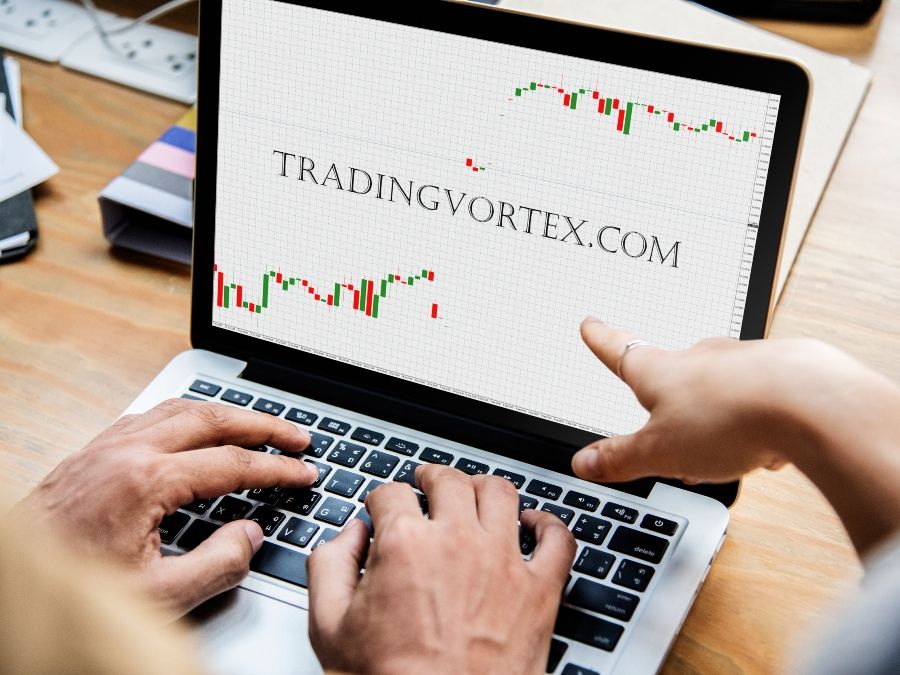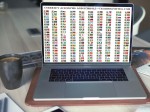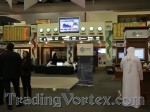Table Of Contents:
- Deciphering the Enigma of Slippage:
Understanding Slippage:
How Slippage Occurs?
Implications of Slippage:
Measuring Slippage:
Strategies to Mitigate Slippage:
Slippage vs. Spread:
Slippage in High-Frequency Trading (HFT):
Real-life Examples of Slippage:
Conclusion:
Deciphering the Enigma of Slippage:
Defining Slippage in Forex Trading:
Imagine you've meticulously analyzed the Forex market, identified a prime entry point, and placed your order at a specific price. However, when your order is executed, you discover that the actual price differs from your intended entry point. This divergence between your desired price and the execution price is precisely what slippage embodies.
The Significance of Slippage in Forex:
Understanding slippage's significance is paramount for every Forex trader. Slippage has direct implications for your trading performance, profitability, and risk management. Here's why slippage matters:
- Impact on Trading Costs: Slippage can increase the cost of each trade, potentially eroding your profits over time. Recognizing and mitigating slippage is essential for managing your trading expenses.
- Risk Management: Slippage can jeopardize your risk management strategies, especially when using stop-loss orders. Sudden price gaps can lead to stop-loss orders being executed at prices less favorable than anticipated.
- Trade Precision: In fast-moving markets, precision is key. Slippage can thwart your attempts to enter or exit the market precisely at your desired price, affecting your overall trading strategy.
- Strategy Adaptation: Different trading strategies are impacted by slippage in various ways. Scalpers, for instance, rely on quick executions at precise prices and may find slippage detrimental, while swing traders might experience less frequent slippage.
- Psychological Impact: Unexpected slippage can lead to emotional reactions in traders, potentially affecting their decision-making and discipline.
In this comprehensive guide, we will delve deeper into the mechanics of slippage, its underlying causes, and the practical steps you can take to mitigate its impact on your Forex trading journey. Whether you're seeking to bolster your understanding of slippage or refine your trading strategies to navigate it more effectively, this article will serve as your beacon in the world of Forex trading intricacies.
Understanding Slippage:
In the intricate world of Forex trading, understanding slippage is akin to deciphering the shifting tides of the market. This section is dedicated to unraveling the nuances of slippage, exploring the multitude of factors that influence its occurrence, and delving into the relationship between different types of orders and slippage.
Factors Influencing Slippage:
Market Volatility, Liquidity, Order Size, and Trading Hours: The occurrence and magnitude of slippage in Forex trading are profoundly influenced by a quartet of factors, each playing a pivotal role in shaping the trading landscape.
- Market Volatility: Volatility refers to the degree of price fluctuation in the Forex market. When markets experience heightened volatility, price movements can become rapid and unpredictable. In such turbulent conditions, traders may encounter slippage more frequently as prices change swiftly between the moment an order is placed and when it is executed.
- Liquidity: Liquidity, often described as the lifeblood of financial markets, refers to the ease with which an asset can be bought or sold without causing significant price changes. Major currency pairs, like EUR/USD or GBP/USD, typically exhibit high liquidity due to the large number of participants. In liquid markets, trades can be executed with minimal slippage. Conversely, less liquid currency pairs are prone to higher slippage because there are fewer market participants willing to trade at specific prices.
- Order Size: The size of your trading order plays a substantial role in the likelihood and magnitude of slippage. Larger orders, also known as "block orders," can struggle to find counterparties at the desired price, resulting in slippage as the order is executed at multiple price levels along its journey. Smaller orders, on the other hand, are generally less prone to significant slippage.
- Trading Hours: The Forex market operates 24 hours a day, divided into different trading sessions (e.g., Tokyo, London, New York). The level of market activity and liquidity can vary significantly depending on the time of day. Slippage is more likely to occur during low-liquidity hours, such as during the overlap of two trading sessions or during weekends when markets are closed.
Different Types of Orders and Their Relation to Slippage:
Understanding how different order types interact with slippage is a crucial aspect of mastering trade execution in Forex.
Market Orders:
- Market Orders are executed at the current market price. While they offer the advantage of immediate execution, they are also more susceptible to slippage. This vulnerability arises because market orders are filled at the prevailing market price, which may differ slightly from the expected or desired price at the moment of execution.
Limit Orders:
- Limit Orders empower traders to specify the exact price at which they want to buy or sell a currency pair. These orders are typically executed at the specified price or better, without incurring slippage, as long as the market reaches the specified price. However, if the market never reaches the specified price, the limit order may remain unfilled.
Stop Orders:
- Stop Orders transform into market orders once a specified price level is reached. At that point, they become susceptible to the same potential slippage as market orders. Traders use stop orders to limit losses or enter positions at favorable prices, but they should be aware that slippage can occur when the stop order is triggered.
Understanding these fundamental concepts is pivotal for traders aiming to navigate the Forex market with precision and confidence. In the following sections, we will explore how slippage manifests in real trading scenarios and uncover strategies to effectively mitigate its impact.
How Slippage Occurs?
Understanding how slippage occurs is pivotal for Forex traders looking to anticipate and manage this phenomenon effectively. In this section, we will delve into the mechanics of slippage, dissecting its underlying mechanisms, and exploring common scenarios in which slippage can disrupt your trading strategies.
The Mechanism of Slippage:
Slippage is not a mysterious force but rather a natural outcome of the way orders are executed in the dynamic Forex market. It occurs when there is a discrepancy between the price at which a trader expects their order to be executed and the actual price at which it is filled. This discrepancy arises from the interplay of various factors:
- Order Execution Process: When a trader places an order, it is transmitted to their chosen broker or trading platform. The broker then endeavors to execute the order at the specified price. However, the execution process involves several steps, including order transmission, processing, and matching with counterparties.
- Market Volatility: Market conditions can change rapidly due to various factors, such as economic news releases, geopolitical events, or sudden shifts in sentiment. When volatility surges, prices can fluctuate rapidly, leading to potential disparities between the expected and actual execution prices.
- Liquidity Levels: As discussed earlier, liquidity plays a pivotal role in the ease of order execution. In low-liquidity situations, there may be fewer market participants willing to buy or sell at a specific price, making it more challenging for orders to be executed precisely as intended.
- Order Size: The size of an order can also influence the occurrence of slippage. Larger orders often require more time to be filled completely, increasing the likelihood of slippage as they are matched with multiple counterparties at different prices.
Common Slippage Scenarios:
Understanding the common scenarios in which slippage can occur is essential for traders seeking to anticipate and mitigate its impact effectively. Here are three prevalent scenarios:
- Slippage during Trade Entry and Exit: Slippage can affect traders both when entering and exiting positions. When initiating a trade, slippage may cause the entry price to differ from the intended price, potentially impacting the initial risk-reward calculation. Similarly, when closing a position, particularly during volatile market conditions, slippage can lead to exit prices that deviate from expectations.
- Slippage with Stop Loss and Take Profit Orders: Stop loss and take profit orders are essential tools for managing risk and locking in profits. However, they are not immune to slippage. If market conditions change rapidly and a stop loss order is triggered, it may be executed at a price less favorable than the specified level. Conversely, take profit orders may yield profits that are slightly lower than anticipated due to slippage.
- Slippage in Response to Market Gaps and Spikes: Sudden and significant market gaps or price spikes can result in substantial slippage. Market gaps occur when there is a notable difference between the closing price of one trading session and the opening price of the next. During such events, orders placed at the closing price may be executed at the opening price, causing substantial slippage.
Understanding these mechanisms and scenarios is crucial for traders seeking to navigate the complexities of slippage. In the subsequent sections, we will explore the implications of slippage on various trading strategies and delve into effective risk management strategies to mitigate its impact.
Implications of Slippage:
Understanding the implications of slippage in Forex trading is crucial for traders at all levels. This section delves into the profound impact that slippage can have on various aspects of your trading journey, from strategies and risk management to real-world consequences.
Impact on Trading Strategies:
Slippage can significantly influence the effectiveness and profitability of different trading strategies. Here's how it affects various approaches:
Scalping:
Impact: Scalpers aim to profit from small price movements and execute numerous trades throughout the day. For scalpers, slippage can be particularly detrimental because it can erode the small profit margins they target. Frequent slippage can make scalping less profitable and more challenging to execute consistently.
Swing Trading:
Impact: Swing traders hold positions for days or weeks, aiming to capture larger price swings. While slippage may not have as direct an impact on swing trading as on scalping, it can still affect entry and exit points. Unexpected slippage during trade execution can lead to less favorable entry or exit prices, potentially impacting profit and risk-reward ratios.
Trend Following:
Impact: Trend-following strategies rely on capturing significant price trends. Slippage can affect trend followers when they enter or exit positions during volatile market conditions. It may cause their entry or exit prices to deviate from the intended levels, impacting the strategy's overall performance.
Arbitrage:
Impact: Arbitrage strategies involve exploiting price discrepancies between different markets or assets. Slippage can significantly impact the profitability of arbitrage opportunities. If prices change rapidly while attempting to execute arbitrage trades, the expected profit may diminish due to slippage.
Risk Management in Slippage:
Effective risk management is a cornerstone of successful trading, and slippage introduces a unique set of challenges:
Stop Loss Orders:
Impact: Traders use stop loss orders to limit potential losses. However, slippage can cause stop loss orders to be executed at prices less favorable than the specified level. This can lead to larger losses than initially anticipated in volatile market conditions.
Take Profit Orders:
Impact: Take profit orders are used to lock in profits at predefined levels. Slippage can affect the execution of these orders, potentially leading to profits that are lower than expected.
Position Sizing:
Impact: Traders often adjust the size of their positions based on their risk tolerance and stop loss levels. Slippage can affect the actual risk incurred, as positions may be closed at prices different from the intended stop loss level.
Real-world Consequences:
Beyond strategies and risk management, slippage can have tangible real-world consequences:
Trader Profitability:
Impact: Slippage can directly affect a trader's profitability. Frequent slippage can reduce overall profits, making it essential for traders to assess its impact on their trading style and adjust accordingly.
Broker Relations:
Impact: Traders may develop preferences for brokers based on their slippage rates and execution quality. Consistently high slippage can lead traders to seek alternative brokerage options.
Market Liquidity:
Impact: Slippage is influenced by market liquidity. Traders, particularly those executing large orders, may impact market liquidity, creating a feedback loop that can exacerbate slippage for themselves and others.
Recognizing these implications, traders can proactively adapt their strategies, risk management practices, and choice of brokers to navigate the challenges posed by slippage effectively. In the following sections, we will delve into measuring slippage, strategies to mitigate its impact, and the distinction between slippage and spread.
Measuring Slippage:
Measuring slippage is a crucial aspect of managing your Forex trading performance. This section explores the various metrics used to assess slippage and the tools available for tracking and analyzing this phenomenon.
Metrics for Assessing Slippage:
When evaluating slippage, traders commonly rely on specific metrics to quantify its impact. These metrics offer insights into the degree of slippage experienced during trades:
Slippage Rate:
- Definition: The slippage rate represents the percentage difference between the expected price of an order and the actual executed price.
- Calculation: (Actual Executed Price - Expected Price) / Expected Price * 100.
- Interpretation: A higher slippage rate indicates a larger disparity between the intended and actual prices, signifying more significant slippage.
Slippage Costs:
- Definition: Slippage costs measure the financial impact of slippage on a trader's account balance.
- Calculation: Slippage Costs = Slippage Rate * Order Size * Currency Pair Pip Value.
- Interpretation: Slippage costs provide a tangible representation of how much slippage has affected your trading results in terms of your account's monetary value.
Tools for Tracking and Analyzing Slippage:
Effective measurement and analysis of slippage require the use of specialized tools and resources:
Trading Platforms:
Role: Most modern trading platforms provide order execution data, including the actual executed prices of trades. Traders can compare these prices with their intended entry and exit levels to calculate slippage.
Trading Journals:
Role: Maintaining a trading journal is a valuable practice for traders. It allows you to record details of each trade, including the intended price, actual execution price, and slippage incurred. Over time, a trading journal can help identify patterns of slippage and evaluate its impact on your trading.
Third-party Software:
Role: Various third-party trading tools and software applications offer advanced slippage tracking and analysis capabilities. These tools can provide detailed reports, performance metrics, and visual representations of slippage trends.
Broker Reports:
Role: Some brokers provide detailed execution reports that include slippage data for individual trades. Reviewing these reports can help traders gain insights into the slippage experienced with a specific broker.
Slippage Analytics Tools:
Role: Specialized slippage analytics tools are designed to track, analyze, and visualize slippage patterns across multiple trades and timeframes. These tools can be invaluable for traders seeking a comprehensive understanding of slippage trends.
By leveraging these metrics and tools, traders can gain a deeper understanding of the slippage they encounter in their trading activities. This knowledge empowers traders to make informed decisions about their trading strategies, risk management practices, and choice of brokers to effectively navigate the challenges posed by slippage.
Strategies to Mitigate Slippage:
Mitigating slippage is a fundamental goal for Forex traders aiming to optimize their trading performance and minimize unwanted surprises. This section explores various strategies and techniques that can be employed to effectively reduce and manage slippage.
Choosing the Right Forex Broker:
Selecting the right broker is the first step in mitigating slippage. Different brokers offer varying levels of execution speed, access to liquidity providers, and fee structures, all of which can influence the extent of slippage traders may encounter.
Execution Speed:
- Role: The speed at which a broker executes orders is a crucial determinant of slippage. Brokers with high-speed execution can minimize the time window during which prices can change between order placement and execution.
- Considerations: Traders should research and choose brokers with a reputation for fast and reliable execution.
Liquidity Providers:
- Role: Brokers often source liquidity from multiple providers. A broker with access to a diverse range of liquidity providers can offer improved order execution by reducing the likelihood of slippage during peak trading hours.
- Considerations: Investigate a broker's liquidity pool and the quality of its liquidity providers when selecting a brokerage.
Fees and Costs:
- Role: The cost structure of a broker, including spreads, commissions, and overnight financing fees, can impact trading costs. Lower costs can make slippage more manageable by reducing the overall expenses associated with trading.
- Considerations: Analyze the fee structure of potential brokers to ensure it aligns with your trading strategy and goals.
Leveraging Advanced Order Types:
Traders can employ advanced order types to gain more control over their trade executions and minimize slippage.
Limit Orders:
- Role: Limit orders allow traders to specify the exact price at which they want to enter or exit a position. When the market reaches the specified price, the order is executed at that level or better, without slippage.
- Considerations: Traders can use limit orders strategically to enter trades at precise price points and minimize slippage.
Stop-Limit Orders:
- Role: Stop-limit orders combine the features of stop orders and limit orders. They function as stop orders until a certain price is reached, at which point they become limit orders. This allows traders to control both their entry and exit points with precision.
- Considerations: Traders can employ stop-limit orders to minimize slippage when executing trades based on specific price triggers.
Trading during Optimal Hours:
Choosing the right time to trade can significantly reduce the chances and magnitude of slippage. Traders can consider the following aspects:
Market Liquidity:
- Role: Slippage is often less prevalent during periods of high market liquidity when there are more participants and smoother order execution.
- Considerations: Focus on trading during major trading sessions or overlapping sessions when market liquidity tends to be higher.
Currency Pair Activity:
- Role: Different currency pairs have varying levels of activity and liquidity. Trading currency pairs that are more actively traded can provide better order execution and lower slippage.
- Considerations: Consider the trading volume and liquidity of specific currency pairs when planning your trades.
Event Timing:
- Role: Major economic announcements and news events can lead to sudden price fluctuations and increased slippage. Traders should be cautious when trading around such events.
- Considerations: Check economic calendars and news releases to avoid trading during high-impact events.
Setting Realistic Expectations:
Ultimately, slippage is an inherent part of Forex trading. Traders should embrace the reality that slippage is inevitable and cannot be entirely eliminated. By setting realistic expectations and viewing slippage as a part of their overall trading costs and risks, traders can maintain a disciplined and long-term perspective.
Incorporating these strategies and techniques into your Forex trading approach can help you minimize the impact of slippage and optimize your overall trading performance.
Slippage vs. Spread:
Understanding the distinctions between slippage and spread is crucial for Forex traders as these two terms are often intertwined but represent distinct factors that affect the cost and execution of trades. In this section, we will clarify the differences between slippage and spread and provide insights into when each factor should be considered.
Differentiating Slippage and Spread:
While both slippage and spread contribute to the overall cost of a trade, they originate from distinct sources and impact trades differently:
Slippage:
- Origin: Slippage occurs due to the dynamic nature of financial markets, where prices can change rapidly between order placement and execution. It results from discrepancies between the expected execution price and the actual executed price.
- Impact: Slippage can lead to executions at prices less favorable than intended, affecting entry, exit, and stop-loss orders. It is particularly prominent during high volatility or low liquidity conditions.
Spread:
- Origin: Spread represents the difference between the bid (sell) price and the ask (buy) price of a currency pair. It is a fundamental component of a broker's fee structure and is not influenced by market dynamics or order execution.
- Impact: The spread is a constant factor in trading costs, affecting both entry and exit prices. Traders pay the spread when entering a trade and must account for it when setting profit and stop-loss levels.
When to Consider Each Factor:
The consideration of slippage and spread depends on various factors, including your trading strategy and market conditions:
Slippage:
- Relevance: Slippage is more relevant for traders executing market orders or using stop-loss and take profit orders. It becomes particularly significant during periods of high market volatility, news releases, or low liquidity.
- Mitigation: Slippage can be managed by using limit orders to specify entry and exit levels, thereby reducing the risk of executing orders at unfavorable prices.
Spread:
- Relevance: Spread is a constant component of trading costs, affecting all trades, regardless of market conditions. It is especially relevant for traders focused on short-term price movements, such as scalpers.
- Mitigation: Traders can minimize the impact of spread by choosing brokers with competitive spreads and considering how the spread affects the risk-reward ratio of their trades.
Balance:
Some trading strategies may prioritize reducing one factor over the other. For example, scalpers may prioritize minimizing spread costs, while swing traders may focus on controlling slippage during volatile market conditions.
Market Conditions:
The choice between considering slippage or spread may also depend on the current market environment. Traders should adapt their approach to align with the prevailing conditions, whether characterized by high volatility or stable price movements.
Understanding when to emphasize slippage or spread in your trading decisions is essential for optimizing your overall trading performance. By recognizing the distinct roles these factors play, traders can make informed choices that align with their trading strategies and market conditions.
Slippage in High-Frequency Trading (HFT):
“High-Frequency Trading (HFT)” is a specialized area within Forex trading that requires a unique approach due to its rapid execution speeds and high trading volumes. This section explores the challenges HFT traders face regarding slippage and the technological solutions employed to minimize its impact.
Challenges for HFT Traders:
HFT traders engage in lightning-fast buying and selling of financial instruments, including currencies, within fractions of a second. This high-speed trading style presents several challenges related to slippage:
Latency Issues:
- Challenge: HFT strategies rely on ultra-low latency to execute trades before competitors. Even a slight delay in order execution can result in significant slippage.
- Impact: Slippage caused by latency issues can lead to missed profit opportunities or losses, which is detrimental for HFT traders seeking to capitalize on tiny price differentials.
Competition and Crowding:
- Challenge: HFT algorithms are in constant competition with one another, vying for the same liquidity and market movements. This competition can intensify during specific trading sessions, leading to more frequent slippage.
- Impact: Higher competition often results in more aggressive pricing behavior and tighter spreads, which can exacerbate slippage.
Technical Glitches:
- Challenge: The complexity of HFT systems can make them vulnerable to technical glitches, system outages, or connectivity issues, all of which can contribute to slippage.
- Impact: Technical failures can disrupt the execution of HFT strategies, leading to unexpected slippage and financial losses.
Market Manipulation:
- Challenge: HFT traders must contend with potential market manipulation attempts. Malicious actors may attempt to create artificial price movements to trigger slippage for HFT algorithms.
- Impact: Slippage caused by market manipulation can result in substantial losses for HFT traders and compromise the integrity of their strategies.
Technology Solutions to Reduce Slippage:
HFT traders deploy advanced technologies to address the unique challenges associated with slippage:
Low-Latency Networks and Data Feeds:
- Solution: HFT firms invest in high-speed networks and data feeds to reduce the time it takes to transmit orders and receive market data.
- Impact: Lower latency enables HFT traders to execute orders more quickly, reducing the likelihood of slippage caused by latency issues.
Advanced Algorithms and Models:
- Solution: HFT algorithms are designed to analyze market conditions in real-time and make split-second trading decisions. These algorithms incorporate predictive models to anticipate market movements.
- Impact: Advanced algorithms help HFT traders identify and respond to price changes rapidly, minimizing slippage.
Artificial Intelligence and Machine Learning:
- Solution: HFT firms leverage AI and machine learning to adapt to changing market dynamics, detect patterns, and optimize execution strategies.
- Impact: AI-driven systems enhance HFT traders' ability to adjust to evolving market conditions and reduce the risk of slippage due to unexpected events.
In the world of HFT, where speed is paramount, technological advancements play a crucial role in mitigating slippage. These solutions help HFT traders maintain their competitive edge and reduce the adverse effects of slippage on their trading strategies.
Real-life Examples of Slippage:
Real-life examples of slippage provide valuable insights into how this phenomenon has affected traders, institutions, and financial markets. This section explores historical case studies and the lessons learned from notable events related to slippage in Forex trading.
Historical Case Studies:
Black Wednesday in 1992:
- Background: On September 16, 1992, George Soros and his Quantum Fund took a massive short position against the British Pound (GBP) within the European Exchange Rate Mechanism (ERM). The market sentiment was overwhelmingly bearish on the GBP.
- Slippage Impact: The massive selling pressure caused significant slippage as GBP plummeted. Many traders experienced execution at prices considerably worse than anticipated due to the intense market volatility.
- Lessons Learned: This event demonstrated how slippage can be exacerbated during major market-moving events. Traders should consider risk management strategies and account for slippage during such times.
Asian Financial Crisis in 1997:
- Background: The Asian Financial Crisis in 1997 led to severe currency devaluations across several Asian economies. Traders sought to capitalize on these currency movements.
- Slippage Impact: As traders rushed to execute orders during the crisis, slippage became prevalent, especially in currency pairs involving affected Asian currencies. Slippage amplified losses for some traders.
- Lessons Learned: Traders learned that slippage can occur during economic crises when market participants scramble to execute orders. Risk management remains vital in such scenarios.
Global Financial Crisis in 2008:
- Background: The 2008 financial crisis triggered widespread panic and volatility in financial markets, affecting currencies, equities, and commodities.
- Slippage Impact: Forex traders experienced substantial slippage when executing trades amid extreme market turbulence. Both retail and institutional traders faced challenges in achieving desired execution prices.
- Lessons Learned: The 2008 crisis underscored the importance of assessing slippage risk during market crises. Traders realized the value of hedging strategies and more conservative position sizing.
Lessons Learned from Notable Events:
Prepare for Unexpected Market Movements:
Lesson: Historical events like the Asian Financial Crisis and the 2008 Global Financial Crisis serve as reminders that markets can experience abrupt and severe movements. Traders should be prepared for unexpected shifts and have risk management plans in place.
Take Advantage of Market Opportunities:
Lesson: Slippage can work both ways. While it can lead to unexpected losses, it can also present trading opportunities. Traders who understand slippage dynamics may identify moments when slippage favors their positions and seize these opportunities.
Avoid Common Mistakes:
Lesson: Real-life examples highlight common trading mistakes, such as overleveraging or neglecting risk management. Learning from these mistakes is essential for traders seeking consistent success in Forex markets.
Real-life examples of slippage provide concrete evidence of its impact on traders and underscore the importance of being well-prepared, disciplined, and adaptable in the dynamic world of Forex trading. These historical events serve as valuable lessons for traders at all levels.
Conclusion:
In the world of Forex trading, understanding slippage is not just a matter of knowledge; it's a key element of success. In this concluding section, we'll recap what slippage is, emphasize the importance of managing it effectively, and offer some final takeaways and recommendations.
Recap of Slippage in Forex Trading:
Slippage, in essence, is the disparity between the expected price of a trade and the actual executed price. It's a common occurrence in the dynamic and fast-paced world of Forex trading. Slippage can take various forms, impacting trade entries, exits, stop-loss orders, and even take-profit orders. Factors influencing slippage encompass market volatility, liquidity, order size, and trading hours.
The Importance of Managing Slippage:
Managing slippage is pivotal for traders of all levels, from newcomers to seasoned professionals. Here's why it matters:
- Performance Optimization: Effective slippage management ensures that your trades are executed as close as possible to your desired prices, optimizing your trading performance.
- Risk Reduction: By minimizing slippage, you mitigate the potential for unexpected losses, especially in volatile markets or during news events.
- Profit Protection: Slippage control safeguards your profits by reducing the chances of exiting a trade at less favorable levels.
- Strategic Alignment: Managing slippage aligns with your trading strategy and risk management plan, enhancing overall consistency.
Final Takeaways and Recommendations:
As we conclude our exploration of slippage in Forex trading, here are some final takeaways and recommendations:
- Slippage Is Inevitable: Accept that slippage is an integral part of Forex trading. It can happen to traders of all experience levels and should be factored into your trading strategy and risk management.
- Choose Your Broker Wisely: Your choice of broker can significantly impact slippage. Prioritize brokers with a reputation for reliable execution, competitive spreads, and access to reputable liquidity providers.
- Use Advanced Order Types: Utilize limit orders, stop-limit orders, and other advanced order types to exert greater control over your trade executions.
- Trade During Optimal Hours: Be mindful of market hours and liquidity conditions when executing trades. Avoid periods of low liquidity or high volatility unless your strategy specifically targets these conditions.
- Risk Management Is Key: Implement sound risk management practices, including setting appropriate stop-loss and take-profit levels. These measures can help limit the impact of slippage on your trades.
- Stay Informed: Keep abreast of economic events, news releases, and market developments that may trigger increased volatility and slippage.
- Practice and Test: If you're new to trading or trying out a new strategy, use demo accounts or small position sizes to practice and test your approach before committing substantial capital.
- Continuous Learning: The world of Forex trading is ever-evolving. Stay committed to continuous learning, adaptability, and improving your trading skills.
In the end, while slippage may appear as an obstacle, it can also be viewed as a challenge to be met with knowledge, skill, and strategic planning. By incorporating the insights and recommendations presented in this article, you'll be better equipped to navigate the dynamic landscape of Forex trading and manage slippage effectively as you work toward your trading goals.





































